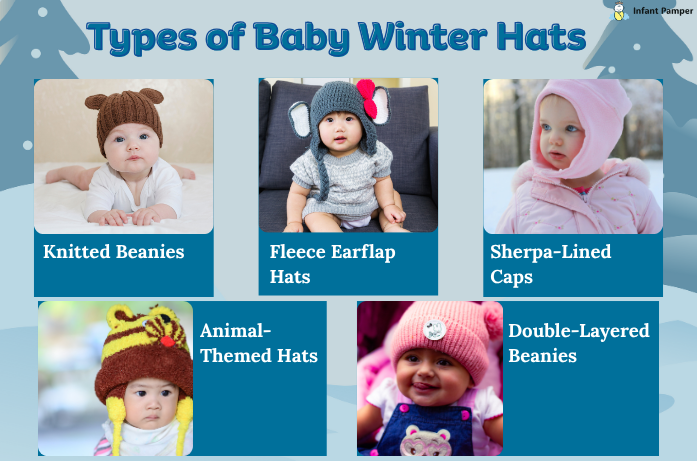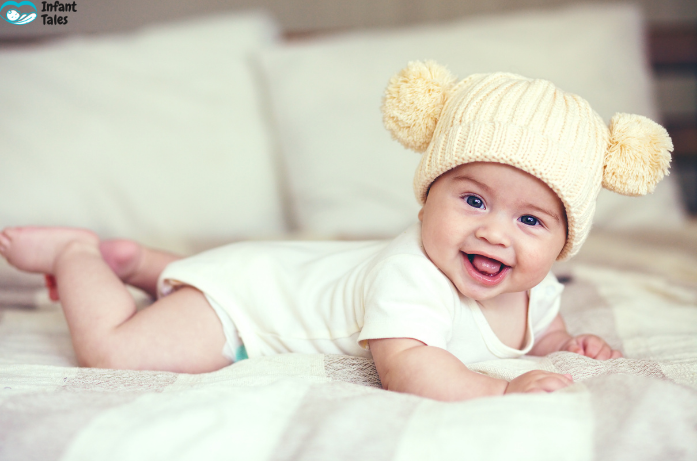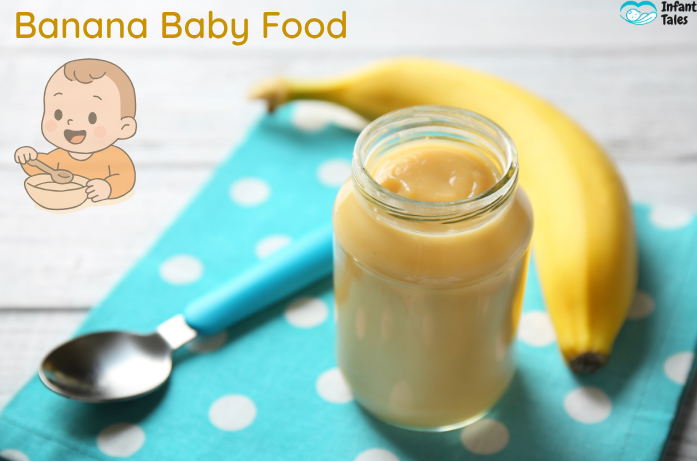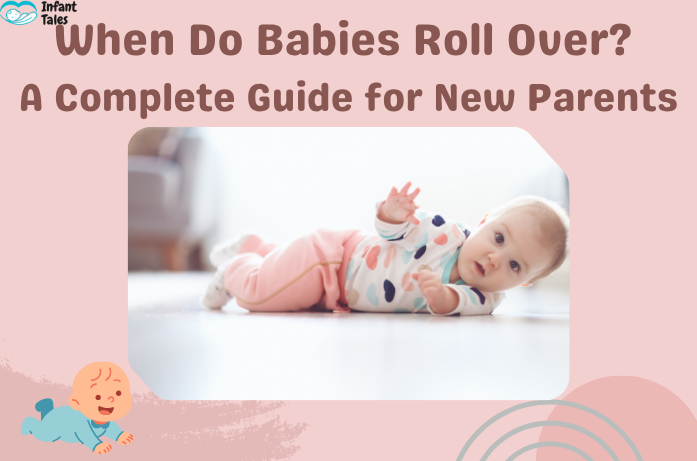By a Caring Mom at Infant Tales
For most parents, one of the primary concerns that come along with winter is the proper clothing of their baby to keep them warm and comfortable. There are many layers of the baby’s dressing, including jackets, socks, and so on, and the Baby Winter Hat is usually the one that does not get the proper attention.
This tiny piece of clothing is more than just an adorable accessory. It’s essential for maintaining your baby’s body temperature and protecting them from cold air and wind. You will be taught all about the Baby Winter Hat in this guide, right from the fabric that fits best to the safest and most suitable care techniques so that your little one remains warm and joyful all through the winter season.
Why Babies Need a Winter Hat
Babies lose heat faster than adults because their bodies are smaller and their heads are relatively larger in proportion. That’s why keeping your baby’s head covered with a Baby Winter Hat is one of the simplest ways to protect them from the cold.
A high-quality Baby Winter Hat can do a lot for your baby:
- Reduce heat loss by trapping warmth around the head.
- Shield sensitive skin from dry, chilly air that can cause irritation.
- Lower the risk of colds and ear infections by covering the ears.
- Provide comfort and a sense of security, especially during outdoor strolls.
A hat makes a huge difference even with very short outdoor excursions. Consider the Baby Winter Hat as the first defense your baby has against the cold.
Choosing the Right Material
Choosing the right fabric is crucial for your baby’s comfort. Because babies’ skin is very sensitive, some fabrics can cause irritation or trap too much heat. The beauty of a baby winter hat is that it feels soft, breathable, and warm, yet doesn’t cause itching or sweating.
Best materials for a Baby Winter Hat:
- Cotton: soft, gentle, breathable, and most suitable for moderately cold winter days.
- Fleece: Lightweight yet insulating; ideal for outdoor activities.
- Wool blends: Give extra warming; see to it that the inner layer is cotton or fleece-lined to prevent itching.
- Sherpa or flannel: Perfect for very cold or really windy weather.
Steer clear of coarse synthetic materials that won’t let the air pass through. Do a gentle friction test between the hat and your wrist, if it’s irritating the baby shouldn’t wear it.
According to the AAP, newborns should be dressed in a way that their clothing is made of breathable materials, is layered, and does not overheat them.
Finding the Right Size
The right size ensures that your baby winter hat not only keeps your baby warm but also doesn’t cause discomfort. A hat that’s too tight can cause marks, while one that’s too loose can get into their eyes.
For an accurate measurement, take a soft tape measure and place it across the widest part of your baby’s head (just above the eyebrows). Then, compare it to the sizing chart below:
| Age | Head Circumference | Hat Size |
| Newborn (0–3 months) | 13–15 in (33–38 cm) | XS |
| 3–6 months | 15–17 in (38–43 cm) | S |
| 6–12 months | 17–18.5 in (43–47 cm) | M |
| 12–24 months | 18.5–19.5 in (47–50 cm) | L |

Types of Baby Winter Hats
There are many adorable styles to choose from, but the right baby winter hat depends equally on practical considerations and aesthetic values. Here are some of the most popular options among parents:
1. Knitted Beanies
Soft and elastic, best for daily wear within or outside the house.
2. Fleece Earflap Hats
Great coverage for the ears and perfect for cold or windy walks.
3. Sherpa-Lined Caps
Very warm for freezing weather; the gentle lining does not let any heat escape.
4. Animal-Themed Hats
Fun and playful; choose designs where decorative parts (like ears or eyes) are securely stitched.
5. Double-Layered Beanies
They give more thermal protection while still being able to breathe and easily move.
Safety Tips for Using Baby Winter Hats
When dressing a baby, their comfort and safety are paramount. Even the cutest baby winter hat can be dangerous if not used correctly.
- Do not use strings or cords: They might cause choking or strangulation.
- Only use soft chin straps: Velcro or snaps are safer than ties.
- Check for overheating: Take off the hat in the house or if your baby’s neck is sweating.
- Inspect regularly: Look for frays, ornaments, or stitches.
- Keep it dry: A wet Baby Winter Hat will neither keep warm nor be baby-friendly.
The Brattleboro Memorial Hospital recommends that children under 3 years old should be completely avoided wearing hats with strings to eliminate the risk of strangulation.
Caring for Your Baby Winter Hat
Proper care keeps your Baby Winter Hat clean, soft, and long-lasting. Babies drool, sweat, and spill often, so gentle washing is key.
Washing Tips:
- Use baby-safe detergent and cold or lukewarm water.
- Hand wash wool and fleece hats to keep them soft.
- Machine wash cotton hats on a gentle cycle.
- Air-dry flat to prevent shrinking or losing shape.
- Store in a dry, clean place when not in use.
It’s a good idea to have two or three baby winter hats on rotation; one to wear, one to dry, and one as a backup.
How Many Hats Does Your Baby Need?
This is a common question from new parents, and the reply is based on your location and way of life. As a rule, you will need at least:
- One lightweight cotton hat for indoor use or mild days.
- One or two fleece or wool hats for outdoor walks and chilly evenings.
- One spare hat for emergencies or when another is in the wash.
Having 3-4 baby winter hats ensures your little one always has a warm and clean option available. Babies grow quickly, so check the fit often and replace the hat if it feels tight or stretched.
Final Thoughts
The humble Baby Winter Hat is one of the most useful items in your baby’s wardrobe. It keeps your little one warm, shields them from cold winds, and offers that soft, snuggly comfort babies love.
By choosing the right material, ensuring a proper fit, and following simple safety and care tips, you’ll help your baby stay warm and happy through every frosty adventure.
Remember, a well-chosen Baby Winter Hat is not just an accessory; it’s a layer of love and protection that keeps your baby safe in every season.
FAQs
1. How can I tell if my baby is too warm while wearing a winter hat?
Touch the back of your baby’s neck, if it feels sweaty or hot, remove a layer. Babies should feel warm, not sweaty, when wearing a Baby Winter Hat.
2. Can newborns wear wool hats?
Yes, but only if the wool hat is lined with soft cotton or fleece inside. Direct wool can irritate newborn skin, so always check for comfort before use.
3. How often should I wash a Baby Winter Hat?
Wash it once or twice a week, or whenever it becomes damp or dirty. Use baby-safe detergent and air-dry to keep it soft.
4. Can I reuse Baby Winter Hats for next winter?
Yes! If the hat still fits comfortably and the fabric is in good condition, reuse it. Just wash and store it in a dry place until needed again.
Want more practical guides like this? Explore Infant Tales for expert advice and real-mom stories that make parenting simpler and more joyful



